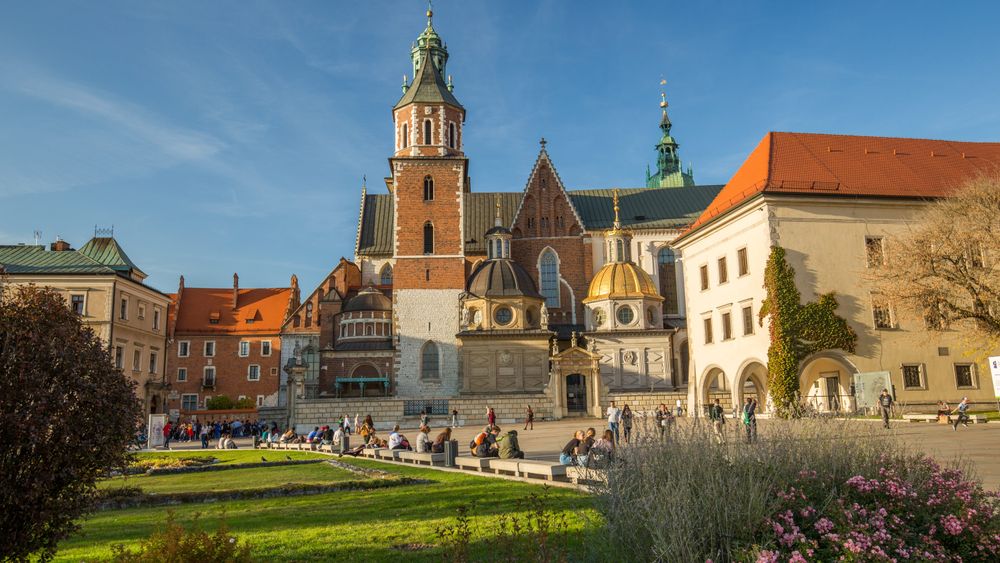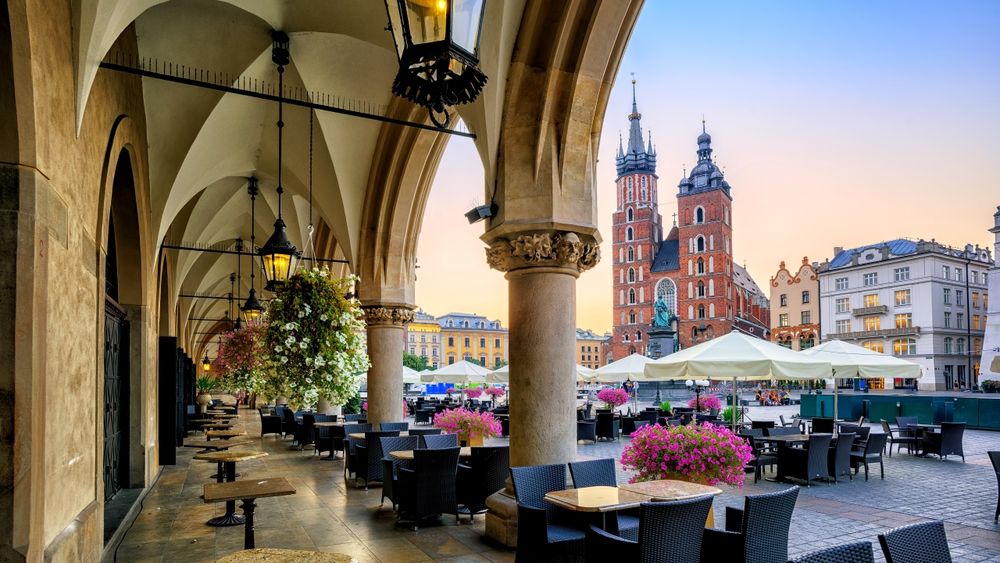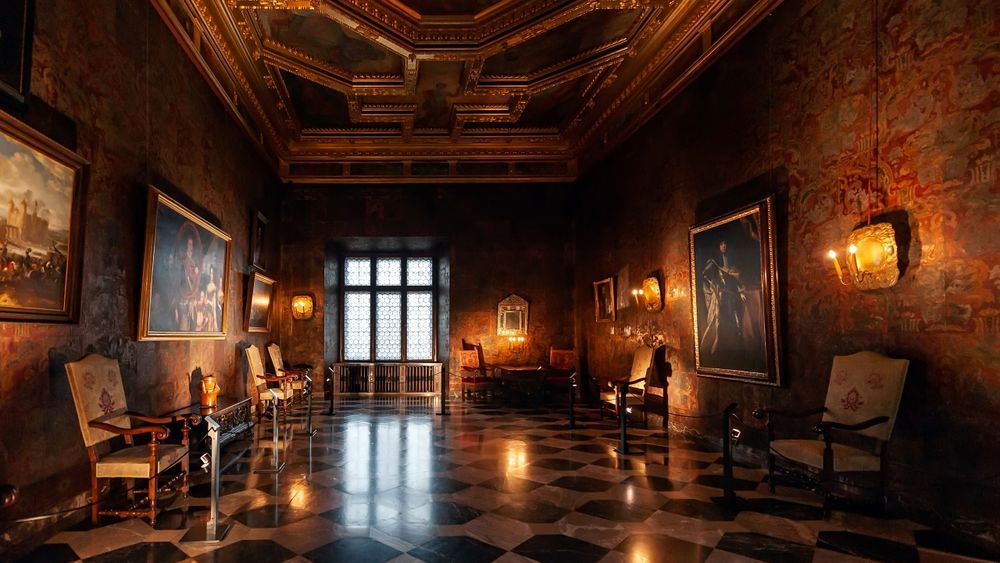3 days in Krakow: Wawel Hill, Rynek Underground, Schindler Factory, Ghetto, Wieliczka and Auschwitz Guided Tour
3 days
From 11:00
Group 1+
English
3 days
11:00
What you'll do
What about Wawel Castle? The Wawel Hill is to Krakow what the Acropolis was to ancient Athens or the Capitoline Hill to Rome. The rocky outcropping towering over the banks of the Vistula has been the seat of secular and ecclesiastical power, today it is the most visited museum. Residence of Polish kings and a symbol of statehood, in 1930 the Castle also became one of the most important museums in Poland. It collects collections of paintings, graphics, sculptures, fabrics, goldsmiths, military items, porcelain and furniture. The chambers display the famous tapestries of Zygmunt August and magnificent Renaissance Italian paintings from the Lanckoronski collection, and the Wawel collections of Eastern art contain the most important and largest collection of tents in Europe. The Royal Castle is also an important center for the conservation of works of art. Permanent exhibitions recreate the appearance of the rooms from the Renaissance and Baroque periods. Krakow's Main Market Square from the inside out For almost 800 years the Market Square has been the central square of Royal Cracow! What has not happened here only during this time! Trade rows were selling goods from all over the world and Krakow merchants made their fortunes from it, the city authorities strictly monitored the order, in the dungeons of the Town Hall the executioner tortured the suspects, and the kings parade through the square to get to their castle. What a time it was... But these times are not entirely missing! Even today you can find the most interesting traces of past events on Market Square, and even more so under Market Square! We invite you to take a walk on one of the most beautiful squares in Europe with a visit to the Dungeon Market Historical and Archaeological Museum! First we will walk around the square itself, find the most interesting artifacts of the old times and unravel their purpose, find out what events took place here, what legendary persons have been here. After that we will go 4 metres underground to the Dungeon Market Museum to find ourselves on the same level as the cobbled roads of Krakow 12-13th century. Schindler's Factory A visit to one of the most popular museums in Krakow - the former Enamel Factory, where a German entrepreneur employed Jews to save them from deportation to camps and death, there is an exhibition "Krakow under Nazi occupation". The modern arrangement of the exhibition is rather a theater and a film telling the history of the city, its inhabitants and occupants, rather than an ordinary museum. In former ghetto The Ghetto Heroes Square is a square in the Podgórze district of Krakow. In the years 1941–1943 it was within the ghetto. It was a place of concentration of the Jewish population before transport to concentration camps. Currently, there is an unusual monument in this place - several dozen cast-iron chairs standing individually in the square. They symbolize property and belongings of Krakow Jews scattered on the streets after the liquidation of the ghetto. The salt wonders of Wieliczka The Salt Mine in the town of Wieliczka, located nearby Krakow, was opened in the 13th century as one of the oldest salt mines in the world. It reaches almost 327 meters underground and is over 287 kilometers. Walk through 20 chambers and countless corridors and steps on the tourist route, breathe the healing air fully and admire the magnificent wooden structures, natural lakes, chambers and majestic salt sculptures. Let the amazing trip to the Wieliczka Salt Mine end a successful day. Auschwitz-Birkenau Around 60 km to the west of Krakow is the small town of Oswiecim, where in 1940 a set of German concentration camps was established. Auschwitz-Birkenau was the largest German concentration camp, where more than 1.5 million prisoners were tortured and murdered during the Second World War. Auschwitz-Birkenau is preserved intact as a reminder of the crime committed against humanity here. The museum includes the ruins of crematoria, gas chambers, the railway platform and other objects of the former concentration camp. Meeting point: on the St. Mary Magdalene Square, at the Piotr Skarga Monument (click to go to Google Maps)
Itinerary
- 1Wawel Hill: Royal Castle and Cathedral & Rynek Underground Museum (Day 1) - Undoubtedly, the heart of Krakow is the residence of Polish kings - the Wawel Royal Castle with its Gothic cathedral. Visiting this symbolic place, we will see a rich collection of paintings, prints, sculptures, fabrics, goldsmiths, militaria, porcelain and furniture, recreating the appearance of rooms from the Renaissance and Baroque periods. We will visit the Royal Chambers with the famous tapestries of Zygmunt August and wonderful Italian Renaissance paintings from the Lanckoroński collection.
- 2We will also enter the Wawel Cathedral and admire the Gothic structure that was once the sanctuary where Polish monarchs were crowned.
- 3All this, of course, will be colored by stories and curiosities from an experienced guide.
- 4After lunch, we will return to the main square to visit the Krakow Underground Museum, opened in 2010 - a kind of archaeological park, where you can observe the illusion of a bustling large medieval city created with the use of modern technologies.
- 5At a depth of several meters below the surface of the Main Square, from the Cloth Hall to St. Mary's Church, a real treasury of information about Krakow's past awaits. On 4,000 square meters underground, there are streets and stands from thousands of years ago, the atmosphere of the market prevails - you can hear the conversations of buyers and the creaking of cars. Scales, coins, clothes, jewelry and even human remains - all artifacts have been found during the excavations.
- 6We will go deep into Krakow on a guided tour of the Market Underground Museum accompanied by a professional guide and discover the rich history of the royal city.
- 7
Schindler's Factory Museum, Former Ghetto & Salt Mine in Wieliczka (Day 2) - Krakow is not only the Old Town and Wawel. Today we will visit the Schindler Factory Museum, which presents everyday life and tragic events that took place in Krakow during World War II. The museum is located in the historic seat of Schindler's Factory, shown in the Oscar-winning film "Schindler's List" by Stephen Spielberg. The unique and modern exhibition of the museum will not leave anyone indifferent.
Then we head towards Plac Bohaterów Getta - a square located in Krakow's Podgórze district. In the years 1941–1943 it was located in the ghetto. It was a place of concentration of the Jewish population before deportation to concentration camps. Currently, there is an extraordinary monument in this place - several dozen cast-iron chairs standing individually in the square. They symbolize the property and belongings of Krakow Jews scattered on the streets after the liquidation of the ghetto. In the corner of the square there is still the famous Apteka pod Orłem (it is not visited) and on one of the streets we can find the remains of the original ghetto wall.
In the second half of the day we will go on a trip to Wieliczka. It is definitely worth a visit! Ballroom, concert hall, art gallery, shrine - all made of salt and located underground. The tourist route through the Wieliczka Mine passes by chambers and drifts, salt and wooden chapels, brine lakes, and around you there are breathtaking views. The walk resembles an expedition not only deep into the Earth, but also into the depths of history. Mining machines, tools, traces of manual salt extraction - all this fits into the story of people and the place that they have created over the centuries. The sacred places of the mine, including the delightful chapel of St. Kinga, create a unique, unique in Europe, and perhaps in the world, underground pilgrimage route.
- 8
Auschwitz-Birkenau Memorial and Museum (Day 3) - The program will be concluded with a visit to the notorious former concentration camp of Auschwitz-Birkenau.
Driving from Krakow will take us about 1.5 hours.
On site, during an over 3-hour walking tour with a local guide, we will see the authentic places where millions of prisoners lived and died - victims of human cruelty. Prison barracks, walls of death, assembly squares, unloading ramps, the ruins of crematoria, personal belongings and documents are silent witnesses of those events and today they are supposed to bear the memory of them never again.
Return to Krakow will take place in the evening.
Note that lunch is not scheduled on this day, there will only be a short break for your own meal during the tour.
What's Included
Professional guides
Entrance ticket to one permanent exhibition (State Rooms or Royal Private Apartments or Crown Treasury subject to availability)
Entrance ticket to the Wawel Cathedral
Entrance ticket to the Rynek Underground museum
Entrance ticket to the Schindler's Factory museum
Entrance ticket to the Salt mine
Entrance ticket to the Auschwitz-Birkenau Memorial and Museum
Transfer Krakow - Wieliczka - Krakow
Transfer Krakow - Oswiecim - Krakow
1 x Lunch without drinks
Meeting Points
St. Mary Magdalene Square, at the Piotr Skarga Monument (plac Świętej Marii Magdaleny, Kraków, Małopolskie, 31-002)
Notes
Please note this is a group tour, please, don't be late.
Attention! Special registration requirements when booking entry to the Auschwitz-Birkenau Museum! all admission tickets to this Museum are personal. Please make sure to include the name and surname of each participant as spelled on the ID document.
The Wawel Cathedral is an active place of religious worship. During religious, state or jubilee events or visits of important guests, admission to the cathedral, royal tombs and the bell tower may be suspended without announcing the reasons. In such a situation, the Organizer reserves the right to replace the entrance to the Cathedral with another one within the castle complex.
Requirements
A dress code is required to enter places of worship (Wawel Cathedral etc.). No shorts or sleeveless tops allowed. Knees and shoulders must be covered for both men and women. You may risk refused entry if you fail to comply with these dress requirements.
Please remember that it is quite cool in the Salt mine (between 14° C and 16° C). Make sure to take warmer clothing even in summer and wear comfortable shoes, as well.
* Attention! Special registration requirements when booking entry to the Auschwitz-Birkenau Museum! all admission tickets to this Museum are personal. Remember to bring your ID card or passport (you will not be able to enter the museum without it). All customers are required to bring an identity document with them on the day of the visit (in the absence of such a document, the staff has the right to refuse entry to the museum). The name and surname on the reservation must be the same as in the ID card. The organizer does not bear any responsibility if any of our clients is denied entry to the Auschwitz-Birkenau Museum due to lack of documents.
Gallery



Cancellation policy
A full refund will apply if you cancel more than 24 hours before the activity start time.
No refund is possible if you cancel less than 24 hours before the activity start time.
Get inspired by a world of food
Carefully curated guides, reviews and inspiration by our team of food travellers and critics.




